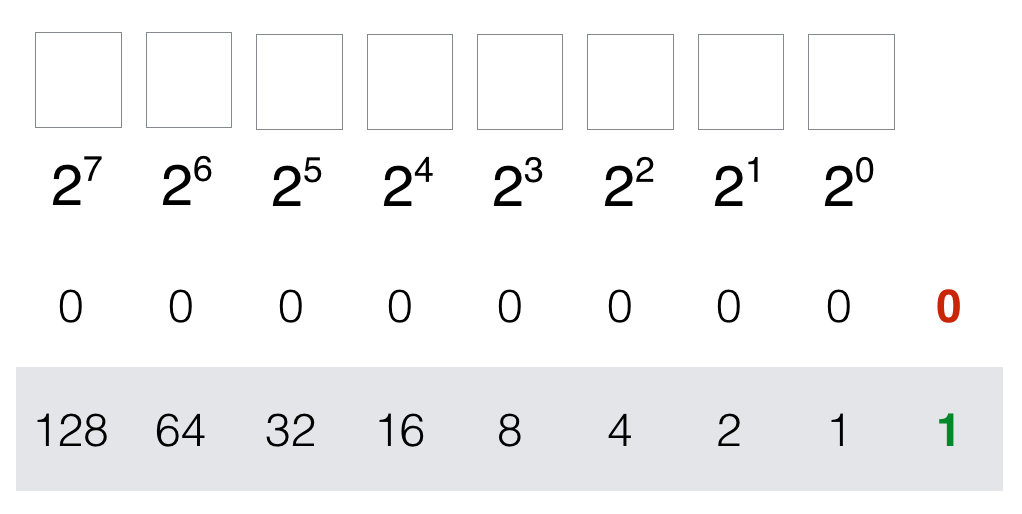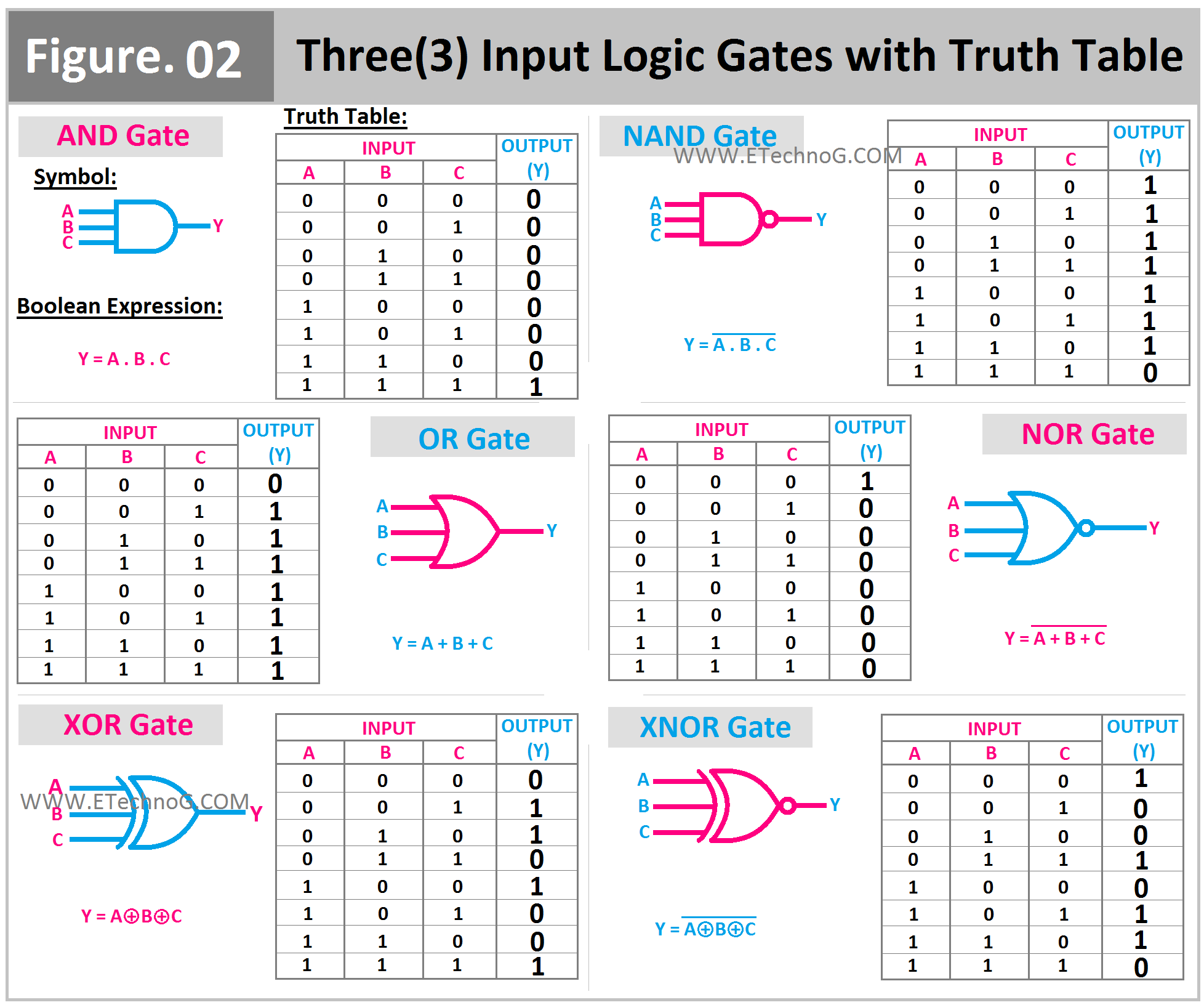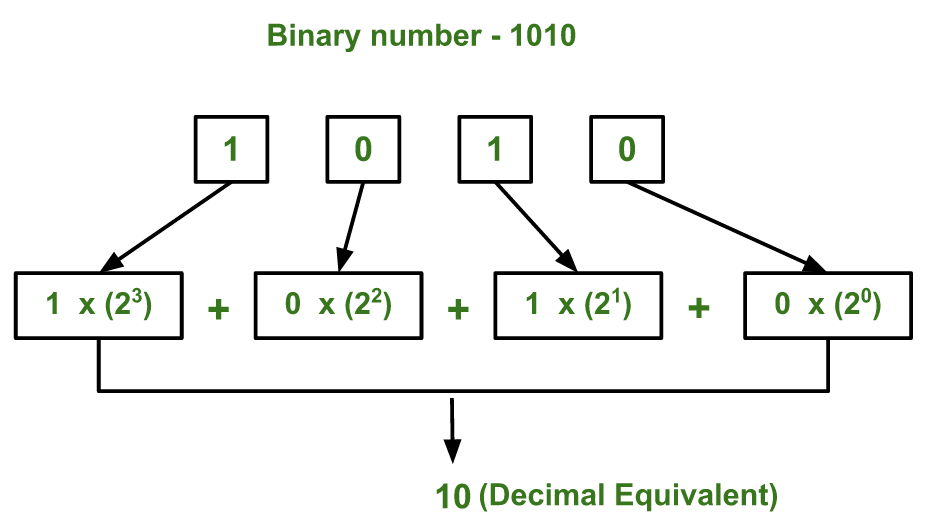Binary Base 2 Math + Logic Gates
Binary Systems & Logic Gates
Understanding Binary: The Foundation of Computing
Binary (Base-2) is the fundamental language of all computing systems. Unlike our familiar decimal system that uses ten digits (0-9), binary uses only two digits: 0 and 1. This elegantly maps to the physical reality of computers, where components can exist in one of two states: OFF (0) or ON (1).
Why Computers Use Binary
- Physical Implementation: Electronic circuits have two stable states (high/low voltage)
- Error Detection: Binary is less prone to noise and signal degradation
- Processing Efficiency: Binary operations can be implemented with simple logic gates
- Scalability: Complex systems can be built from simple binary building blocks
Number Systems Comparison
| Base | Name | Digits Used | Example (15₁₀) | Common Uses |
|---|---|---|---|---|
| 2 | Binary | 0-1 | 1111 | Computer processing, digital storage |
| 8 | Octal | 0-7 | 17 | Legacy systems, file permissions |
| 10 | Decimal | 0-9 | 15 | Human calculations, everyday use |
| 16 | Hexadecimal | 0-9, A-F | F | Memory addresses, color codes, debugging |
Binary to Decimal Conversion
To convert a binary number to decimal:
- Identify the place value of each bit (powers of 2 from right to left)
- Multiply each bit by its place value
- Sum all the results

Example: Converting 10110₂ to decimal
- 1 × 2⁴ = 16
- 0 × 2³ = 0
- 1 × 2² = 4
- 1 × 2¹ = 2
- 0 × 2⁰ = 0
- Sum: 16 + 0 + 4 + 2 + 0 = 22₁₀
Decimal to Binary Conversion
To convert a decimal number to binary:
- Divide the number by 2
- Note the remainder (0 or 1)
- Continue dividing the quotient by 2 until you reach 0
- Read the remainders bottom-to-top
Example: Converting 45₁₀ to binary
- 45 ÷ 2 = 22 remainder 1
- 22 ÷ 2 = 11 remainder 0
- 11 ÷ 2 = 5 remainder 1
- 5 ÷ 2 = 2 remainder 1
- 2 ÷ 2 = 1 remainder 0
- 1 ÷ 2 = 0 remainder 1
- Result: 101101₂
Binary Arithmetic
Addition
1 1 1 (carries)
1 0 1 1 (11 in decimal)
+ 0 1 1 0 (6 in decimal)
---------
1 0 0 0 1 (17 in decimal)
Rules:
- 0 + 0 = 0
- 0 + 1 = 1
- 1 + 0 = 1
- 1 + 1 = 0, carry 1
- 1 + 1 + 1 = 1, carry 1
Subtraction
1 0 1 0 (10 in decimal)
- 0 0 1 1 (3 in decimal)
---------
0 1 1 1 (7 in decimal)
Rules:
- 0 - 0 = 0
- 1 - 0 = 1
- 1 - 1 = 0
- 0 - 1 = 1 (after borrowing 1 from the left)
Two’s Complement: Representing Negative Numbers
Two’s complement is an elegant method computers use to represent and process negative numbers.
To convert a positive binary number to its negative equivalent:
- Invert all bits (0→1, 1→0)
- Add 1 to the result
Example: Converting +9₁₀ to -9₁₀ (using 8 bits)
- +9₁₀ = 00001001₂
- Invert: 11110110
- Add 1: 11110111 = -9₁₀ in two’s complement
This approach allows computers to:
- Use the same hardware for addition and subtraction
- Represent positive and negative numbers seamlessly
- Have only one representation of zero (00000000)
Bit Shifting Operations
Left Shift («)
Shifting bits left by n positions multiplies the number by 2ⁿ. Each bit moves n positions to the left, and 0s are filled in from the right.
Example: 00001010 « 2 = 00101000 (10₁₀ → 40₁₀)
Right Shift (»)
Shifting bits right by n positions divides the number by 2ⁿ (integer division). Each bit moves n positions to the right, and the leftmost bit is determined by the sign bit in signed numbers.
Example: 00101000 » 2 = 00001010 (40₁₀ → 10₁₀)
Logic Gates: The Building Blocks of Computing
Logic gates are the fundamental building blocks of all digital systems. They implement Boolean functions, processing binary inputs to produce binary outputs according to specific rules.

Basic Logic Gates
AND Gate
- Output is TRUE (1) only if ALL inputs are TRUE (1)
- Analogous to the logical “and” operation
- Symbol: AND Gate (resembles a D-shape with straight edge on output side)
Truth Table: | A | B | A AND B | |—|—|———| | 0 | 0 | 0 | | 0 | 1 | 0 | | 1 | 0 | 0 | | 1 | 1 | 1 |
Real-world analogy: A series circuit with two switches - both must be closed for the light to turn on.
Python implementation:
def AND(A, B):
return A and B
# Example usage
print(AND(True, False)) # Output: False
print(AND(True, True)) # Output: True
OR Gate
- Output is TRUE (1) if AT LEAST ONE input is TRUE (1)
- Analogous to the logical “or” operation
- Symbol: OR Gate (resembles a curved D-shape with pointed end at output)
Truth Table: | A | B | A OR B | |—|—|——–| | 0 | 0 | 0 | | 0 | 1 | 1 | | 1 | 0 | 1 | | 1 | 1 | 1 |
Real-world analogy: A parallel circuit with two switches - either one can be closed to turn on the light.
Python implementation:
def OR(A, B):
return A or B
# Example usage
print(OR(True, False)) # Output: True
print(OR(False, False)) # Output: False
NOT Gate
- Output is the INVERSE of the input
- Analogous to the logical “not” operation
- Symbol: NOT Gate (triangle with small circle at output)
Truth Table: | A | NOT A | |—|——-| | 0 | 1 | | 1 | 0 |
Real-world analogy: A normally-closed relay that opens when energized.
Python implementation:
def NOT(A):
return not A
# Example usage
print(NOT(True)) # Output: False
print(NOT(False)) # Output: True
Compound Logic Gates
XOR Gate (Exclusive OR)
- Output is TRUE (1) if EXACTLY ONE input is TRUE (1)
- Useful for parity checking and binary addition
- Symbol: XOR Gate (resembles OR gate with additional line)
Truth Table: | A | B | A XOR B | |—|—|———| | 0 | 0 | 0 | | 0 | 1 | 1 | | 1 | 0 | 1 | | 1 | 1 | 0 |
Python implementation:
def XOR(A, B):
return (A or B) and not (A and B)
# Alternatively: return A != B
# Example usage
print(XOR(True, True)) # Output: False
print(XOR(True, False)) # Output: True
NAND Gate (NOT AND)
- Output is FALSE (0) only if ALL inputs are TRUE (1)
- Universal gate - can implement any Boolean function
- Symbol: NAND Gate (AND gate with small circle at output)
Truth Table: | A | B | A NAND B | |—|—|———-| | 0 | 0 | 1 | | 0 | 1 | 1 | | 1 | 0 | 1 | | 1 | 1 | 0 |
Python implementation:
def NAND(A, B):
return not (A and B)
# Example usage
print(NAND(True, True)) # Output: False
print(NAND(False, True)) # Output: True
Logic Gates in Real Computer Components
Logic gates are combined to create:
- Flip-flops: Basic memory elements that store a single bit
- Registers: Groups of flip-flops that store multi-bit values
- Multiplexers: Circuits that select between multiple inputs
- Arithmetic Logic Units (ALUs): Process arithmetic and logical operations
- Memory Controllers: Manage access to RAM and storage
- CPU Control Units: Coordinate processing operations
Practical Applications of Binary and Logic Gates
Digital Electronics
Logic gates are the building blocks for all digital circuits. Your smartphone’s processor contains billions of transistors organized into logic gates that perform calculations by manipulating binary data.
Computer Memory
Every byte of RAM in your computer is a collection of binary digits (bits). Each bit is essentially a tiny electronic circuit that can be either ON (1) or OFF (0).
Digital Security
Binary powers modern cryptography through:
- Password hashing using XOR operations
- Digital signatures that use binary operations
- Encryption algorithms that manipulate binary data
Real-world Control Systems
Industrial control systems use binary logic to:
- Control traffic lights (IF condition THEN action)
- Operate elevators using logic gate circuits
- Manage automated manufacturing systems
Binary in Software Development
def validate_password(password):
has_uppercase = any(char.isupper() for char in password)
has_lowercase = any(char.islower() for char in password)
has_digit = any(char.isdigit() for char in password)
is_long_enough = len(password) >= 8
# This uses logical AND: all conditions must be TRUE
is_valid = has_uppercase and has_lowercase and has_digit and is_long_enough
if not is_valid:
if not (has_uppercase or has_lowercase):
return "Password needs both uppercase and lowercase letters"
elif not has_digit:
return "Password needs at least one digit"
elif not is_long_enough:
return "Password must be at least 8 characters"
return "Password is valid"

Binary Calculator Implementation
- Homework is to create a nice calculator that will work for Binary
- Should have a conversion from decimal (0.1 extra credit)